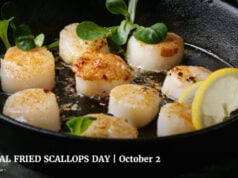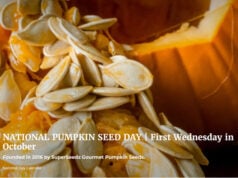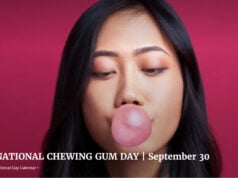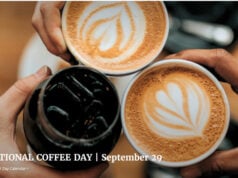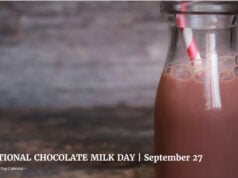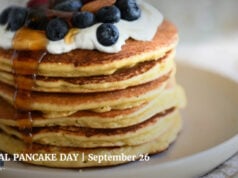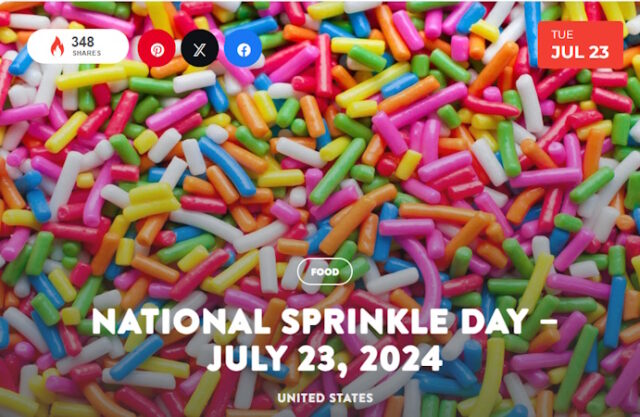
National Sprinkle Day is celebrated on July 23 every year. As the name suggests, the day was indeed designed to celebrate the delight brought on by the existence of sprinkles, the colorful flecks of sugar we all know and love. Sprinkles are used for many things across the world, the most common of which probably is topping ice cream.
It is a well-accepted fact that no matter the hardships, sprinkles make everyone’s day just a little better, even if it’s minute. This day is all about learning about different variations of sprinkles and trying them out for yourself.
- 18th Century – First evidence of Nonpareils.
- 1913 – Dutch confectionaire Erven H. de Jong invents the hagelslag.
- 1930s – Jimmies are used as a cake topping.
- 1940s – Sprinkles are used as ice cream toppings.
- Nonpareils, these tasty decorations are known by different names all over the world.
- In Holland they’re known as hagelslag,
- in Philadelphia and Boston they’re known as Jimmies
- The origin of the name “Jimmies” is still unclear, but it was first published in 1930 as a cake topping reference.
- “Shots” is a special term for sprinkles in Connecticut and other parts of the United States
- in Indonesia they’re known as meses
- in Belgium, they’re known by the somewhat whimsical muizenstrontjes or mouse droppings.
- In the UK, sprinkles are known as “hundreds and thousands.”
- Another UK variant of the term is vermicelli, especially when said of chocolate sprinkles.
- In the Netherlands, a chocolate sprinkle is used as a sandwich topping.
- In Australia and New Zealand, there’s a special treat made using candy sprinkles known as fairy bread, which involves buttered white bread with sugar sprinkles on top!
- The idea of the modern sprinkles dates back to 1913 when Dutch confectionaire, Erven H. de Jong created something by the name of ‘hagelslag.’
- Fairy Bread is a children’s dessert with cake sprinkles or nonpareils on buttered white bread, commonly served at children’s parties in Australia and New Zealand.
- Sprinkles have a coating of shellac, which is something extracted from insects.
- Sprinkles are made of sugar, corn syrup, cornstarch, shortening, wax, and coloring.
- Sprinkles are not vegan.
- The German version of nonpareils is popularly known in Germany as Liebesperlen (love pearls). Invented by confectioner Rudolf Hoinkis, the name derives from a conversation Hoinkis had with his wife, proclaiming he loved her like these “pearls”, the nonpareil. The factory where he first manufactured the treat, was founded in 1896.
- A dessert called confetti cake has sprinkles mixed with the batter, where they slowly dissolve and form little colored spots, giving the appearance of confetti. Confetti cakes are popular for children’s birthdays in the United States.
- The Pillsbury Company sells its variation known as “Funfetti” cake, incorporating a sprinkle-like substance into the mix.
Sources:
Disclaimer
The information contained in South Florida Reporter is for general information purposes only.
The South Florida Reporter assumes no responsibility for errors or omissions in the contents of the Service.
In no event shall the South Florida Reporter be liable for any special, direct, indirect, consequential, or incidental damages or any damages whatsoever, whether in an action of contract, negligence or other tort, arising out of or in connection with the use of the Service or the contents of the Service. The Company reserves the right to make additions, deletions, or modifications to the contents of the Service at any time without prior notice.
The Company does not warrant that the Service is free of viruses or other harmful components



